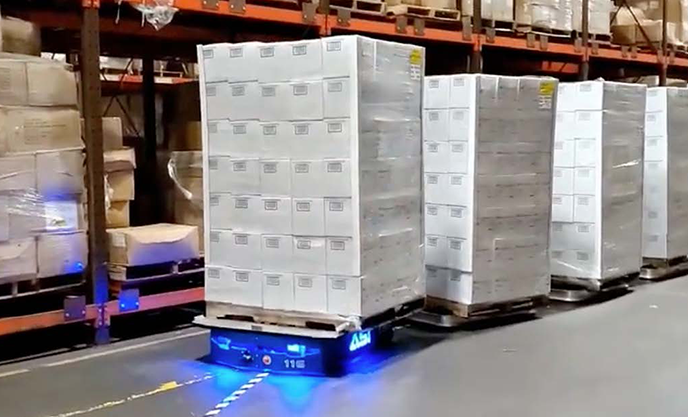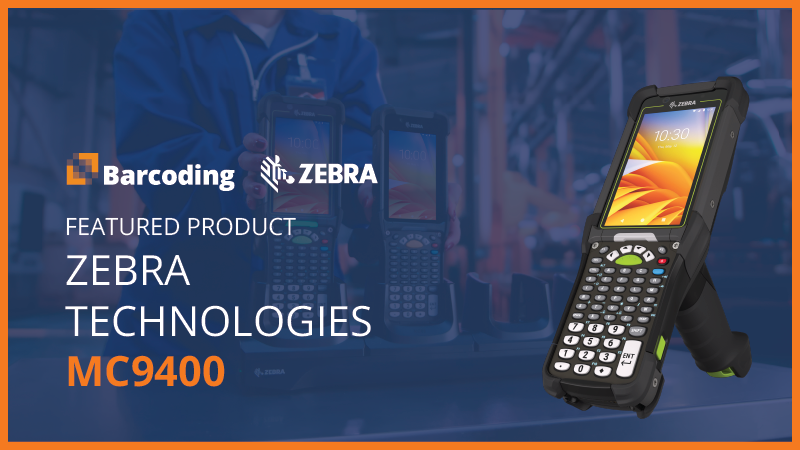Manufacturers face plenty of uncertainty, and in smaller and medium-sized operations, challenges can be amplified. Constraints like limited headcounts, budgets, and access to expertise can make it even harder to compete in a changing industry landscape.
The challenges below can make it tough for manufacturers to build resilient operations that can withstand stress and take advantage of growth opportunities:
- Limited capital resources
- Labor shortages
- Process inefficiencies
- Skills gaps and lack of training and development
- Increasing technology and automation
- Rising cybersecurity threats
But modernizing your operations is a must if you want to take advantage of increased manufacturing momentum since the pandemic boost in onshoring and reshoring suppliers.
Automation, and automated guided vehicles (AGVs) more specifically, can offer a practical and cost-effective point of entry for manufacturers looking to start harnessing technology to improve efficiencies in their operations.
Let’s take a closer look at how AGVs are helping manufacturers navigate a changing landscape and keep growing amid challenges.
AGVs and AMRs: A Quick Overview
Various types of automated guided vehicles (AGVs), along with their good friends, autonomous mobile robots (AMRs), reduce the need for physical labor by eliminating repetitive tasks that require workers to manually carry or transport materials or goods from point to point within operations. These automated material-handling solutions dependably move items with minimal to zero human intervention, following routes designed to optimize efficiency and productivity, and they’re often ideal for material handling jobs like transporting dunnage, moving finished goods to storage or shipping, handling reusable containers, and even stretch-wrapping palletized products.
AGVs and AMRs use different navigational technologies to perform similar tasks. While AMRs dynamically navigate around obstacles and adapt to changing environments, AGVs follow a guideline, such as magnetic tape, embedded inductive wire, or another method, through a facility.
That simplicity of AGV navigation contributes to its cost-effectiveness and accessibility, making it an ideal entry point for introducing automation into manufacturing operations. In fact, an AGV with comparable weight carrying specifications can be as little as a third of the cost of an AMR.
By integrating AGVs into your processes, you can achieve the following growth-enhancing objectives:
1. Tackle Limited Capital Resources
If capital funds are limited, it can be difficult to invest in automation or other innovations that support scaling and efficiency. AGVs, however, can be an affordable solution for streamlining production processes, minimizing waste, and reducing overall costs.
As the AGV transports materials or products on your production floor, it frees up resources to invest elsewhere. And because it follows magnetic tape, it’s easy to redeploy to areas where it’s most needed.
Automation solutions can vary widely in price, but with lower-cost options—and renting and leasing opportunities to avoid capital expenditures—you might be surprised at how affordable an AGV can be. That means, compared with other technologies, an AGV’s path to ROI is a short, straight line from point A to point B.
2. Address Labor Shortages
It’s a tight market for labor, and let’s face it: not many manufacturing jobs enjoy a reputation for being stimulating, challenging growth opportunities. Automation can help change that. How?
First, simply meeting the demand for material movers is essential to keep operations rolling, even when the workers are simply not available for hire. But second, smooth operations that run like a well-oiled machine can build your reputation and position you as an employer of choice—helping you recruit more applicants and preventing the worker churn that plagues some manufacturing companies.
When you automate material handling, you can reassign those workers to tasks that add value—to optimize your return on labor investments and make positions at your company more desirable. And you help create a safer work environment, which can prevent worker injuries and lost time.
3. Improve Process Efficiencies
When the right materials and products get to the right place and people at the right time, operations flow smoothly and work gets done as it should. But when workers have to pause or shut down equipment to replenish materials or supplies, that is not what efficiency looks like. That’s not to mention human workers’ propensity for making mistakes. On the other hand, AGVs’ capabilities enable precise, consistent material handling and transportation, reducing the risk of human error.
But what’s really exciting is this: AGVs can collect and report performance data and provide valuable insights into process inefficiencies and areas in need of improvement. This can kick-start your data-driven manufacturing plan and help you improve your overall efficiency.
4. Find Time for Training to Bridge Skills Gaps
Manufacturers everywhere are contending with skills gaps as technology advances faster than education and training can keep up. It’s harder than ever to find employees with the necessary expertise to operate advanced equipment.
AGVs can help you bridge this gap by taking on those tasks that demand a lot of employee time but don’t return a lot of value. Think about employees’ time spent pushing or pulling carts, carrying bins and boxes, or moving pallets with forklifts or pallet jacks. Then imagine they could instead spend that time learning the specialized knowledge or skills your operations really need.
And sometimes, workers need a win to boost their confidence in approaching new technologies. Here’s the thing about AGVs and AMRs: they’re designed with collaborative work environments in mind, so they’re made to work safely, efficiently, and easily around people. That can help address employees’ reluctance to interact with new technologies as you introduce them.
5. Adapt to Increasing Technology and Automation
It’s not just individuals who could use help adapting to a more automated industrial landscape. To stay competitive manufacturers of all sizes are going to need to embrace innovation, new technologies, and automation. AGVs provide an affordable, accessible entry point to get started—and your teams will begin to see processes from a different perspective.
You’ll soon get used to asking, “Can I automate this step?” And that opens a whole new world of possibilities such as advanced material-moving technologies, IoT-connected equipment, data automation, and artificial intelligence. Taking a gradual approach to adopting technology can help your business stay agile as you adapt to the ever-evolving manufacturing landscape.
6. Mitigate Rising Cybersecurity Threats
Organizations of all kinds need to do everything they can to protect digital assets and improve cybersecurity. Increasing reliance on digital technology in manufacturing can come with increased cybersecurity risks.
Small and agile production facilities can avoid this potential risk by selecting automated equipment that can run without having to access your network. AGVs are a perfect example. Their simplified navigation technology means they don’t add yet another entry point for malicious actors, lowering your risk of being hacked through connected machinery.
That point might lead you to ask, “So, I don’t need IT’s help with AGVs in my facilities?” Smart question, and the answer is yes. AGVs can operate independently of a connected network—but if you want to connect them, you can do that, too.
There’s a lot more to learn about how quickly, simply, and affordably you can automate the most tedious and unappealing tasks to enhance plant safety, increase employee productivity and satisfaction, and support the future growth of your manufacturing business. Get started by downloading our free whitepaper. Just click here or below.






